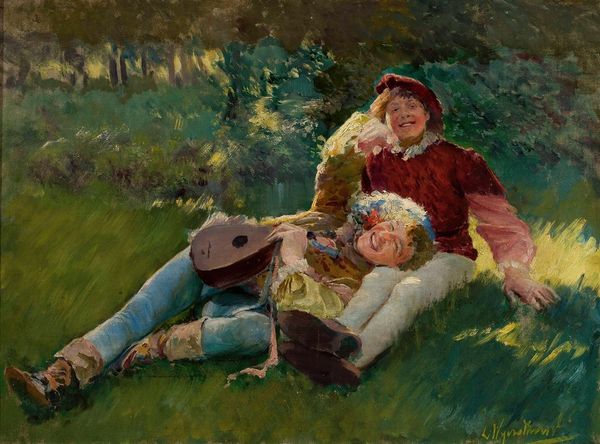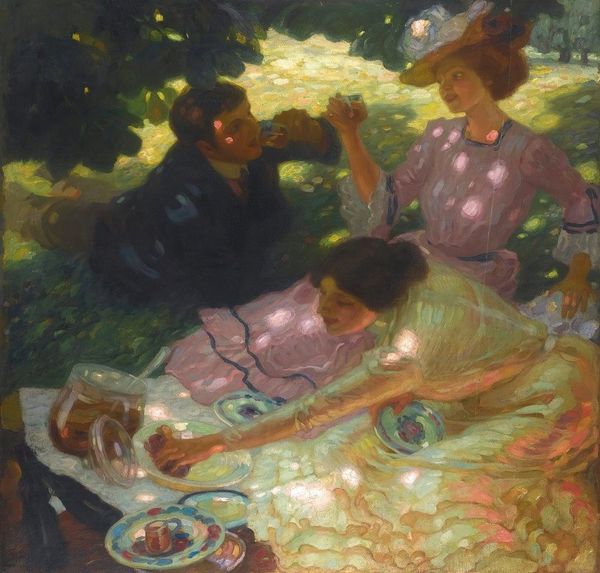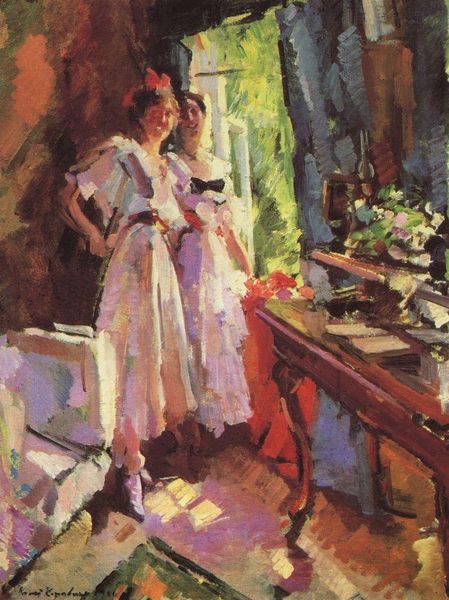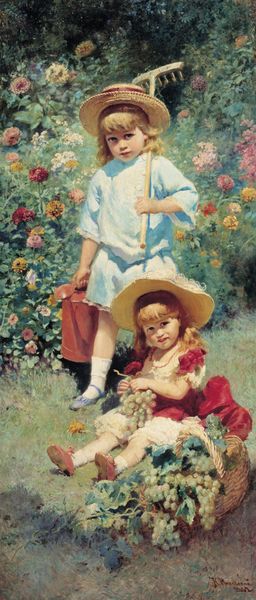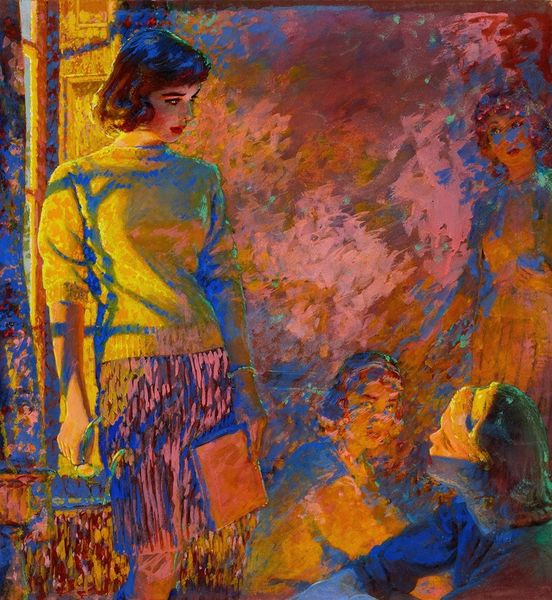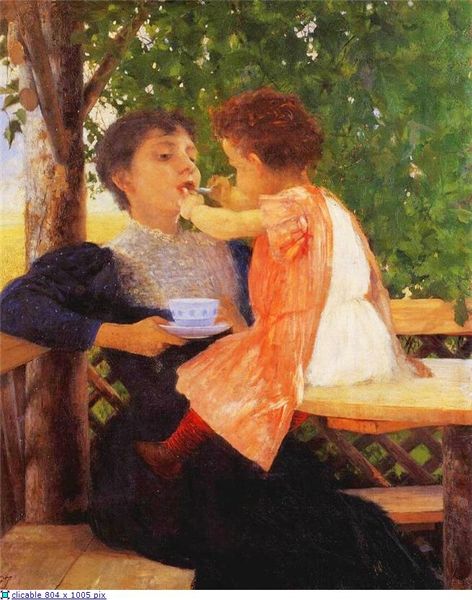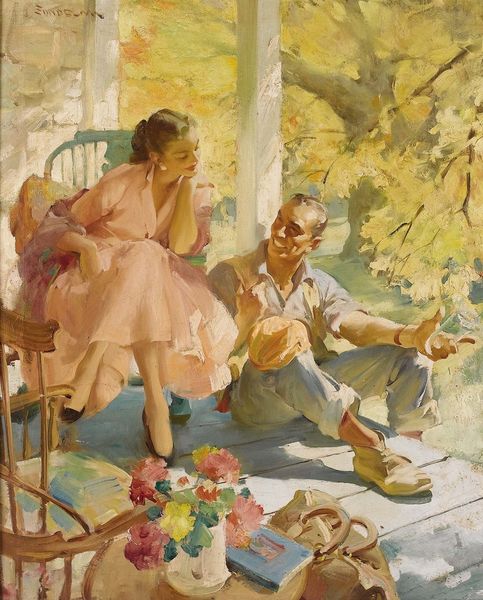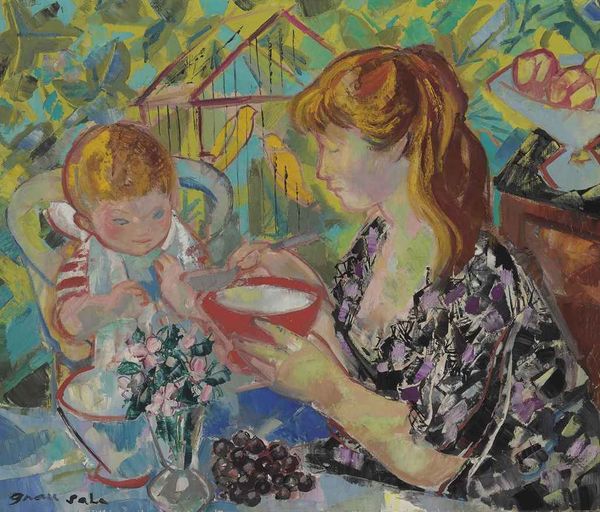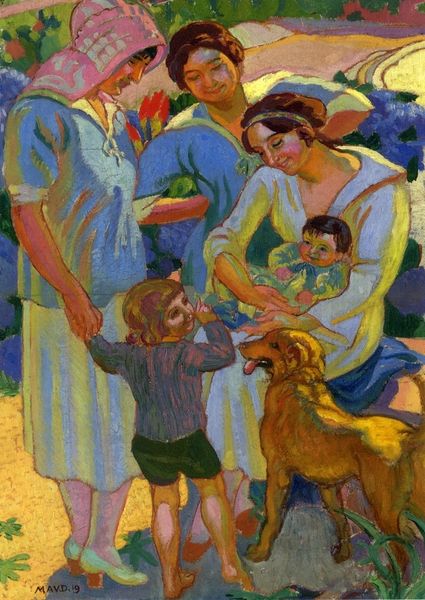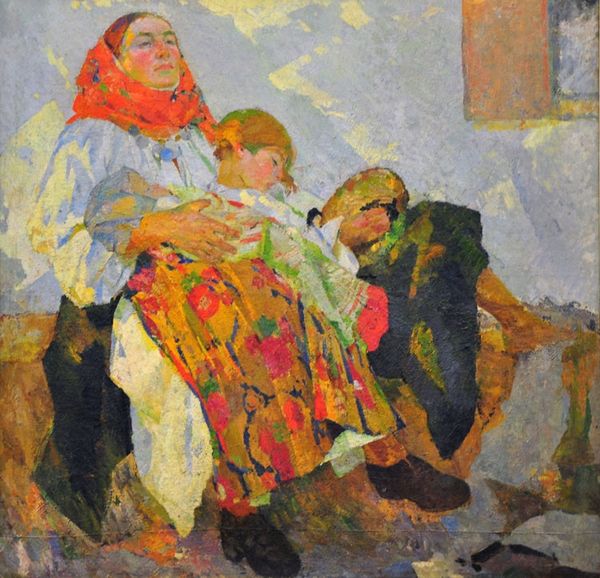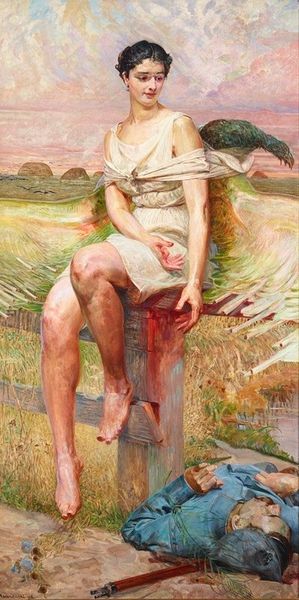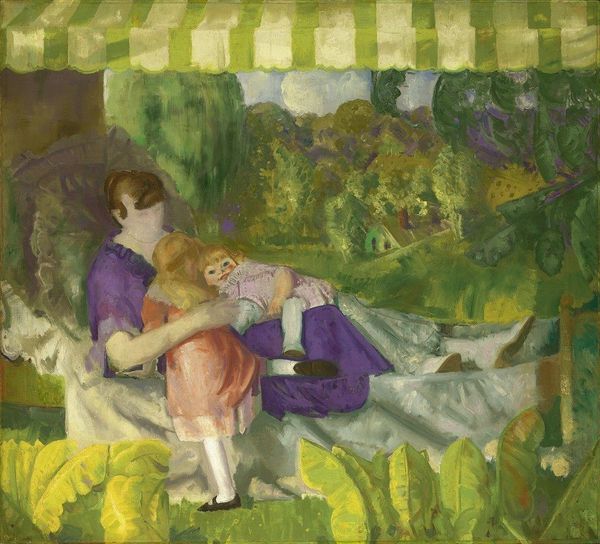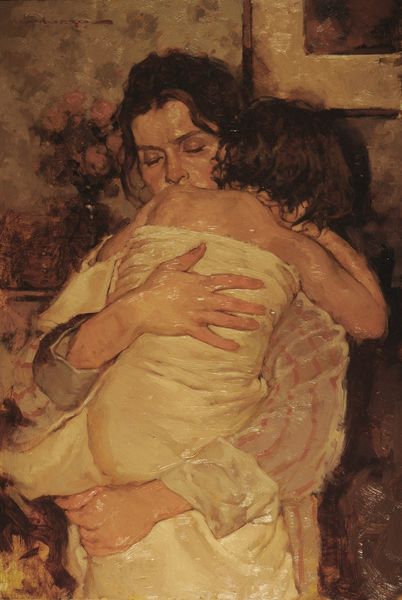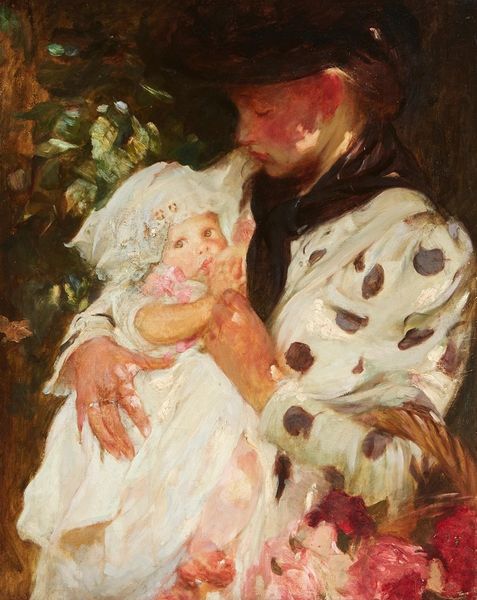
Dimensions: 66 x 61 cm
Copyright: Haddon Sundblom,Fair Use
Curator: Haddon Hubbard Sundblom, best known for his iconic Santa Claus illustrations for Coca-Cola, offers us a quieter, more introspective moment in this oil painting titled "Clown and the Girl," created in 1928. Editor: Whoa, my first thought? It feels strangely tender, yet unsettling at the same time. All those rosy hues—soft pink dress, sun-kissed skin—but then there’s that white-faced clown lurking like a dream... or maybe a nightmare. Curator: Absolutely. That juxtaposition is central to its power. Consider the clown, a figure often associated with joy and entertainment, presented here with almost melancholy. Sundblom was part of the Expressionist movement, which sought to convey inner emotion over realistic representation, so consider this a departure from literal reality. Editor: It's interesting you say expressionistic, it kind of dances around the style without really committing, like it is Fauvist adjacent with the free, painterly brush strokes, particularly in the background which almost becomes secondary as the light pools more intently onto the faces of our protagonists. The gaze between the girl and clown… What are they thinking? Curator: I would suggest the scene transcends simple amusement. In the context of the late 1920s, post-war anxieties were often channeled through art. Clowns, detached from authentic emotion behind their painted masks, become symbols of broader societal fragmentation. Editor: Maybe. Or maybe Sundblom, feeling a bit clownish himself, is reflecting on performance, on the masks we all wear. The little girl looks entranced. The doll with a wonky green toupee, and a miniature puppet companion at the feet of the clown... Curator: Let us delve deeper. Observe the doll at the clown's knees; her gaze seems knowing as if mirroring the audience's reflection of what they see, in contrast, note how the second doll the clown is holding seems like the one he has in his direct power as a puppeteer. As such, it suggests layers of narrative possibility surrounding the construction of identity and innocence lost. Editor: Yeah, that's all great stuff and really informs it, but the girl is a really intriguing subject, who feels unadulterated; which given this particular historical point is probably something a lot of people can relate to, especially now. In many ways, this captures this childlike moment perfectly. What's the story? Are they friends, is the clown an uncle? Curator: Sundblom leaves those questions open, prompting us to engage actively with the painting’s emotional landscape. By resisting easy answers, he ensures that "Clown and Girl" remains resonant across generations, doesn't it? Editor: Absolutely. A bit haunting, a bit funny, and a lot thought-provoking, it leaves you wondering about the stories hidden behind those smiles and painted faces.
Comments
No comments
Be the first to comment and join the conversation on the ultimate creative platform.
